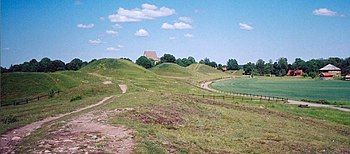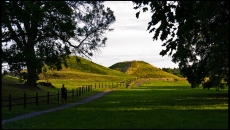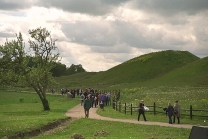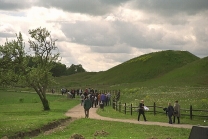No video yet

Gamla Uppsala
A village outside Uppsala in Sweden
Gamla Uppsala (Swedish: [²ɡamːla ²ɵpːˌsɑːla], Old Uppsala) is a parish and a village outside Uppsala in Sweden. It had 17,973 inhabitants in 2016.
As early as the 3rd century AD and the 4th century AD and onwards, it was an important religious, economic and political centre. Early written sources claim that already during pre-history, Gamla Uppsala was well known in Northern Europe as the residence of Swedish kings of the legendary Yngling dynasty. In fact, the oldest Scandinavian sources, such as Ynglingatal, the Westrogothic law and the Gutasaga talk of the King of the Swedes (Suiones) as the "King at Uppsala".
During the Middle Ages, it was the largest village of Uppland, the eastern part of which probably originally formed the core of the complex of properties belonging to the Swedish Crown, the so-called Uppsala öd, of which the western part consisted of the royal estate itself, kungsgården.
It was also the location of the Thing of all Swedes which was a thing (general assembly) held from pre-historic times to the Middle Ages, at the end of February or early March. It was held in conjunction with a great fair called Disting, and a Norse religious celebration called Dísablót. The Law of Uppland informs us that it was at this assembly that the king proclaimed that the leidang would be summoned for warfare during the summer, and all the crews, rowers, commanders and ships were decided.
It was not only the Norse cultic centre, it also became Sweden's archbishopric in 1164.
Geographical description
Gamla Uppsala lies on Fyris Wolds, a cultivated plain in the valley of the River Fyris which is densely populated in its southern part, while the northern part consists of farms.
Religious importance
Medieval Scandinavians held Gamla Uppsala as one of the oldest and most important locations in Scandinavia. The Danish chronicler Saxo Grammaticus held Odin himself to have resided in Gamla Uppsala far back in the mists of time:
At this time there was one Odin, who was credited over all Europe with the...









